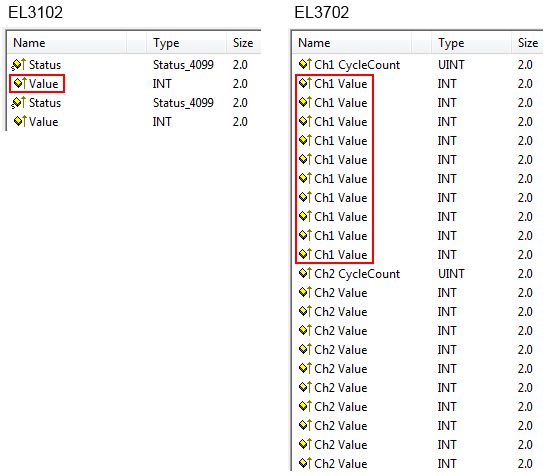Oversampling terminals/boxes and TwinCAT Scope
Generally input data of a terminal/box could be achieved by the scope either directly (via the activated ADS server) or by creation of a PLC variable which is linked to the PDO of a terminal/box for recording them. Both procedures will be explained for TwinCAT 3 (TC3) at first and for TwinCAT 2 (TC2) respectively.
Oversampling means that an analog or digital input device supplies not only one measured value for each process data cycle/EtherCAT cycle (duration T), but several, which are determined at a constant interval t < T. The ratio T/t is the oversampling factor n.
A channel thus offers not only one PDO for linking in the process data, as in the example here with the EL3102, but n PDOs as in the case of the EL3702 and other oversampling terminals/boxes.
The definition of “oversampling” by the Beckhoff’s point of view shouldn’t be mixed up with the oversampling process of a deltaSigma ADC:
- deltaSigma ADC: the frequency used by the ADC to sample the analogue signal is faster than a multiple times than the frequency of the provided digital data (typically in kHz range). This is called oversampling resulting by the functional principle of this converter type and serve amongst others for anti-aliasing.
- Beckhoff: the device/ the terminal/box read of the used ADC (could be a deltaSigma ADC also) digital sample data n-times more than the PLC/ bus cycle time is set and transfers every sample to the control – bundled as an oversampling PDO package.
For example these both procedures are arranged sequentially by their technical implementation within the EL3751 and can also be present simultaneously.

Accordingly the Scope2 (TC2) or ScopeView (TC3) can read in and display several PDOs per cycle in correct time.